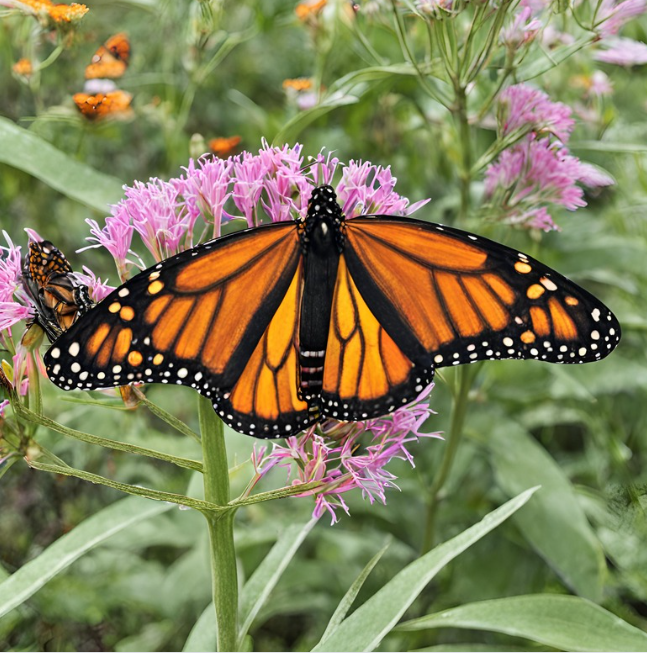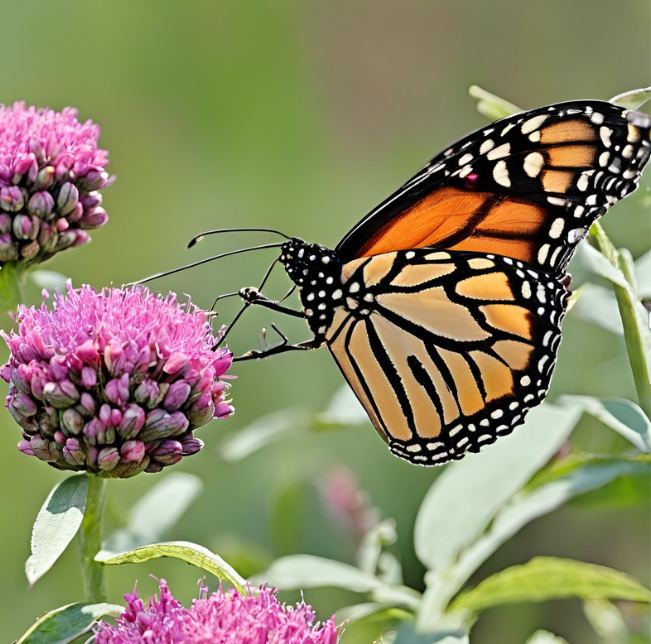Skip to content

How To Get Rid of Aphids on Milkweed to Protect Monarch Butterflies
Introduction
- Hook: Begin with a compelling fact or anecdote about the critical role of milkweed in the life cycle of monarch butterflies.
- Thesis Statement: Introduce the issue of aphid infestations on milkweed and the importance of controlling them to protect monarch butterflies.
- Importance: Highlight the significance of milkweed as the primary food source for monarch caterpillars and the threat posed by aphids.
Section 1: Understanding Aphids and Their Impact on Milkweed
- Aphid Identification:
- Description of aphid appearance (small, soft-bodied insects, usually yellow or green).
- Common species of aphids found on milkweed (e.g., oleander aphids).
- Lifecycle of Aphids:
- Brief overview of aphid reproduction and lifecycle.
- How rapid reproduction contributes to infestations.
- Impact on Milkweed:
- How aphids damage milkweed by sucking sap, causing stunted growth, and transmitting diseases.
- Effects of aphid infestations on the overall health of milkweed plants.
- Consequences for Monarch Butterflies:
- Reduction in milkweed quality and availability for monarch caterpillars.
- Potential secondary effects on monarch population health.
Section 2: Monitoring and Early Detection
- Regular Inspections:
- Importance of inspecting milkweed plants regularly for signs of aphids.
- Tips for identifying early signs of aphid infestations (e.g., curled leaves, sticky honeydew).
- Beneficial Insects:
- Identifying natural predators of aphids, such as ladybugs and lacewings.
- Encouraging the presence of beneficial insects in the garden.
Section 3: Natural Methods to Control Aphids
- Manual Removal:
- Techniques for physically removing aphids from plants (e.g., handpicking, using a strong water spray).
- Insecticidal Soap:
- How to use insecticidal soap to effectively kill aphids without harming milkweed or monarchs.
- Application tips and frequency of use.
- Neem Oil:
- Benefits of neem oil as a natural insecticide and its impact on aphids.
- How to properly dilute and apply neem oil to milkweed.
- Essential Oils:
- Using essential oils like peppermint or rosemary to repel aphids.
- Recipe and application methods for essential oil sprays.
Section 4: Biological Control Methods
- Introducing Beneficial Insects:
- How to attract and introduce natural predators of aphids (e.g., ladybugs, parasitic wasps).
- Creating a garden environment that supports beneficial insect populations.
- Encouraging Biodiversity:
- Planting a variety of plants to create a balanced ecosystem.
- Benefits of companion planting to deter aphids.
Section 5: Chemical-Free Control Techniques
- Water Spray:
- Using a strong jet of water to dislodge aphids from milkweed.
- Best practices for using water sprays to avoid damaging plants.
- Homemade Sprays:
- Recipes for homemade aphid sprays using ingredients like garlic, soap, and water.
- Application tips and effectiveness of homemade solutions.
Section 6: Long-Term Prevention Strategies
- Healthy Plant Practices:
- Ensuring milkweed plants are healthy and well-nourished to resist aphid infestations.
- Proper watering, soil management, and fertilization techniques.
- Regular Pruning:
- Pruning milkweed to improve air circulation and reduce aphid habitats.
- Safe pruning methods to avoid harming monarch eggs and larvae.
- Seasonal Maintenance:
- Seasonal tips for preventing aphid infestations (e.g., overwintering strategies, early spring inspections).
Section 7: Myths and Misconceptions about Aphid Control
- Chemical Pesticides:
- Discussing why chemical pesticides are harmful to monarch butterflies and should be avoided.
- Clarifying common misconceptions about the effectiveness of various aphid control methods.
Conclusion
- Summary: Recap the key methods for controlling aphids on milkweed to protect monarch butterflies.
- Final Thoughts: Emphasize the importance of using natural and eco-friendly methods to maintain a healthy environment for monarchs.
- Call to Action: Encourage readers to implement these strategies in their gardens and share their success stories.


